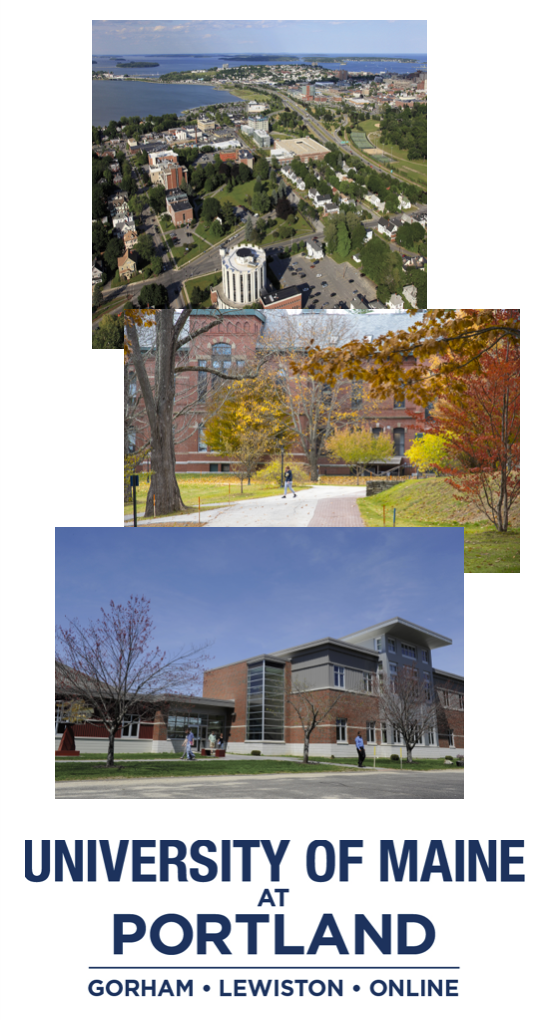Glenn Cummings, University of Southern Maine president, held a press conference on January 16 to discuss the research and rationale behind a proposed name change for the school. In an attempt to align itself with the University of Maine System, avoid name confusion, and attract more out-of-state students, the new proposed name is “University of Maine at Portland.”
With Portland’s status as one of the most appealing and opportunity-laden small cities in the U.S., USM leaders believe adding the word Portland to its name will make the school more marketable to out-of-state students; a move administrators believe is critical to the school’s sustainability due to Maine’s low birth rate.
Cummings said initial feedback from surveys of 400 prospective students, 400 parents and about 100 out-of-state guidance counselors indicate that changing the name would make a difference to prospective students. The most influential data for Cummings was the likelihood of out-of-state guidance counselors to recommend the school given a name change. Eighty one percent of out-of-state guidance counselors would be more likely to recommend the school to college bound students given the Portland connection.
Why the push to bring in the out-of-state students? According to Cummings, out-of-state students “help us build scholarships and bring in money that we can give to Maine students. I can’t give the scholarships I want to give to reduce the Maine burden.”
The university, which has campuses in Portland, Gorham and Lewiston, began exploring a possible name change last August. Cummings said “University of Maine at Portland” emerged as the preferred choice, and the new logo would include the words, “Gorham, Lewiston and Online.”

While not the final USM logo, a new logo such as the one above would incorporate all three campuses.
The Gorham campus is no stranger to name changes. It was founded in 1878 as the Gorham Normal School, became known as Gorham State Teachers College and Gorham State College in the mid 1900s, then changed to the University of Maine at Portland-Gorham in 1970 before changing its name once again to the University of Southern Maine in 1978.
While the majority of faculty is in favor of the change, 57 percent of current students and 66 percent of alumni oppose the name change. Cummings has heard concerns about the fate of the Gorham campus in particular and confirmed there is no intent to eliminate that location.
“First and foremost, Gorham and Lewiston are part of our long-term future, and in changing our name we will ensure that prospective students and the public understand we are a three-campus university. Second, we will never lose sight that we are a university whose primary mission is to support Maine, our state’s citizens and their children. We are pursuing a name change to help fulfill that mission,” said Cummings during the press conference.
Senator Bill Diamond, of Windham, who has a bachelor’s degree from Gorham State Teachers College and master’s degrees from both the University of Maine, Portland-Gorham, and the University of Southern Maine, is apprehensive about the proposed change and has been contacted by residents, alumni and legislators who share his concerns. He believes the focus of the university should remain on Southern Maine and the mostly rural communities that comprise the university. He also believes that the proposal is underestimating what the USM name means to people.
As he shared in an op-ed to the Portland Press Herald in November 2018, “The name ‘University of Southern Maine” is inclusive and welcoming to all, and discarding that identity to replace it with ‘Portland’ could have unintended consequences.”
While Cummings is sensitive to the concerns, he believes the name change is “necessary to ensure the future of our university, the quality of the education we offer, and our ability to keep our university affordable for our students.”
The research done by Market Decisions appears to support the belief that a name change would have a significant and immediate impact. “I think the data speaks for itself but sometimes you can hear things that can help to mitigate some of the concerns,” said Cummings.
“Gorham is such an important part of the discussion,” Cummings said. “It needs to be done in the right way. The next six to eight months are extremely important.” His goal is to be very clear about the process and listen to people.
If approved, Cummings expects the name change to cost three quarters of a million dollars but he foresees that being offset by increased enrollment. “If you bring in 100 new out-of-state students paying full rates over the next three years, you’ve paid back the $750,000.”
He also believes the benefits of a one time expenditure outweigh the other option of initiating a gradual, more costly, rebranding over the next 20 years.
School officials will continue to hold community dialogue events throughout the spring. The Board of Trustees would need to approve the change before it is presented to the Legislature for final approval. The timeline projects an effective name change in summer or fall of 2021.
“At the end of the day, it really has to be something that keeps the organization going. It doesn’t solve all problems, but it’s a move in the right direction to really change the way we do business,” said Cummings.


